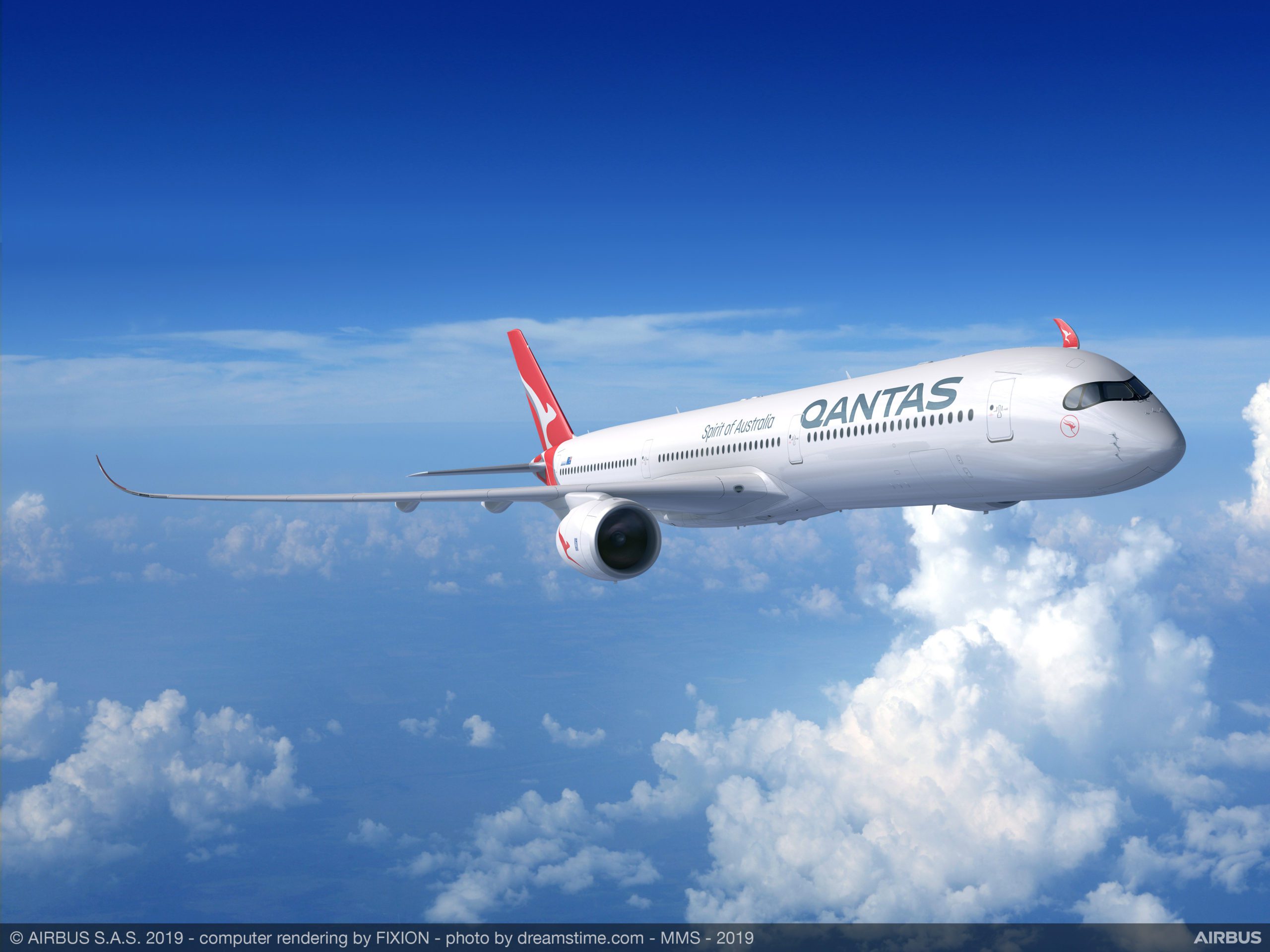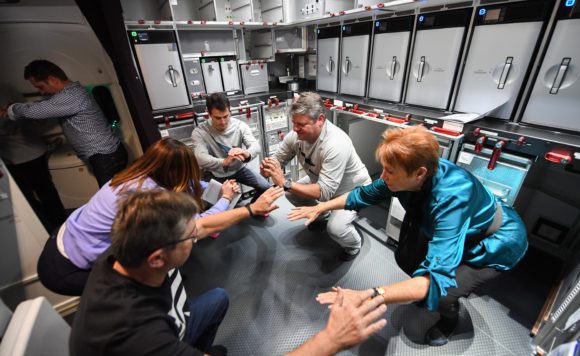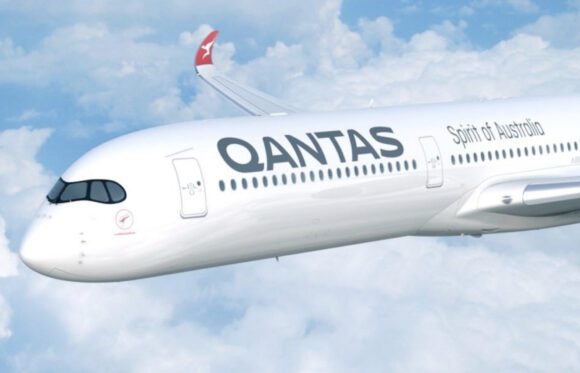
A350 1000 Qantas RR 1 scaled
So Qantas has made up its mind: it has selected the Airbus A350-1000 as the preferred aircraft to operate the ultra-long services from ‘Down Under’ to the US and Europe over Boeing’s offering, the 777X. What has made the difference?
Of course, we don’t have access to the Project Sunrise business case that would give us a detailed analysis of the two aircraft models but the Qantas press release of December 13 provides some insight in the way of thinking. Let’s go through them:
Availability: Qantas has always said it wished to start ultra-long flights from Sydney and Melbourne to London, New York, and Los Angeles (plus potentially more routes) around 2023. Today, the airline confirms it is on a more or less strict schedule to start these flights HY1 2023.
If that’s the starting point, it was a matter of checking which aircraft would be available in time. Airbus has been at an advantage as it offered the A350-1000 which is already in service since February 2018 with Qatar Airways.
Boeing’s 777X is not. First flight of the -9 is about 1,5 years late if it will happen in Q1 2020, with a redesign of the General Electric GE9X stator vanes to blame for most of the delay. While the much-publicized decompression issue on a static test bed caught the headlines, this doesn’t seem to affect the schedule of the 777X too much. Boeing is focused on the MAX does, however. Would first flight of the 777-9 slip again and certification slip to mid or late 2021 or maybe even later, this would make it a tight squeeze to meet the Project Sunrise deadline.
Yes, Airbus will have to do its homework to modify the A350-1000, but this should be possible in two years. Expect some preparatory work to have been done in recent years as Airbus studied a -2000, while it can lean on experience from the -900ULR. Airbus is even willing to extend a final decision from Qantas by a month until March 2020 and still offer production slots to meet the 2023 target.
The verdict here: Airbus 1-Boeing 0.
Suitability: The A350-1000 seems a better fit for the job than the 777X. It seems Boeing has offered a special version of the -9 to Qantas, but this aircraft seems too big for the job it needs to do. Qantas hasn’t confirmed the cabin specifications for the Project Sunrise airliner except saying it will have modified products, but this should be in around 300-350 passengers to make a 19-hour flight comfortable and profitable. Seat costs and revenues per passenger will have played a decisive factor in choosing the A350-1000 over the 777-9. As such, the smaller 777-8 would meet Qantas’ needs better but it is still unclear when and if Boeing will produce this version. Then we are back to ‘availability’ again: the preferred Boeing of choice (the 777-8) will not be available on time.
To meet Project Sunrise specifications, Airbus is offering the A350-1000 with a slightly higher fuel spec and increased maximum take-off weight over the current 316 tonnes. No details are available here, but comparing the standard -900 with the -900ULR, the latter can cater for 24.000 liters of extra fuel without additional tanks. The -1000 will have an extra tank, but changes will be rather limited to increase its range over the standard 16.100 kilometers.
Speaking to Bob Lange, senior vice president of Business Analysis and Market Forecasting in Dubai last month, he said the ultra-long-range market seems to be too much of a niche market to justify the development of a dedicated -1000ULR.
The verdict on suitability: Airbus 1-Boeing 0.
Reliability: From the Qantas press release comes clear that the airline has carefully looked at the reliability of the available aircraft. There is no doubt that the 777X will be a formidable aircraft in service but it still has to tick all boxes and earn its track record. The same goes for its engines.
The release specifically mentions the Rolls-Royce Trent XWB-97 with its strong reliability record in two years of service, even though Emirates President Sir Tim Clark was critical of them last September – but still ordered XWB-84s for his 50 A350-900s at the Dubai Air Show…
There have been Airworthiness Directives that cover the XWB as well, but issues have been rather limited. Chief engineer Civil Large Engines Phil Curnock gave an interesting insight on that in Dubai: compared to the Trent 1000, the XWB has been designed using much more sophisticated digital simulation technology that has helped identify potential problems before the first engine was even built.
The verdict on engines: Rolls-Royce 1 – General Electric 0.
Qantas said today its announcement is not a firm order for 12 A350-1000s yet as the airline needs the extra month until March to finalize its specifications and try to reach an agreement with cockpit crew union AIPA. Project Sunrise means pilots have to extend their duty hours. There is still a ‘final gap’ to be closed in the business case on this. Qantas has offered some suggestions to the union, including a three-percent pay rise for crew that operates on the ULR-flights as well as promotional opportunities. The airline offers pilots to fly on both the A350-1000 as well as on the existing fleet of A330s.
The first two Project Sunrise test flights have learned that passengers need extra space onboard the aircraft to keep them fit. (James D. Morgan/Qantas)
On December 17, Qantas will do its third and final Project Sunrise test flight from New York to Sydney to further research the effects of ultra-long flights on crew and passengers. Like on the first two, it will use a brand-new Boeing 787-9 with some 40 occupants on board. The first flights have proven the need for a dedicated space onboard the aircraft where Economy passengers can stretch their legs and do exercises to keep them fit. Re-scheduling of services to cope with different time zones is also still subject to further analysis.
“Between the research flights and what we’ve learned from two years of flying Perth to London, we have a lot of confidence in the market for direct services like New York and London to the east coast of Australia”, Qantas CEO Alan Joyce said. “From the outset, we’ve been clear that Project Sunrise depends on a business case that works. We’ll only commit to this investment if we know it will generate the right return for our shareholders given the inherent commercial risks.”
His remarks still leave some space for a change of mind, but by announcing its commitment to the Airbus Qantas is a big step closer to make Project Sunrise a reality.
Views: 21




